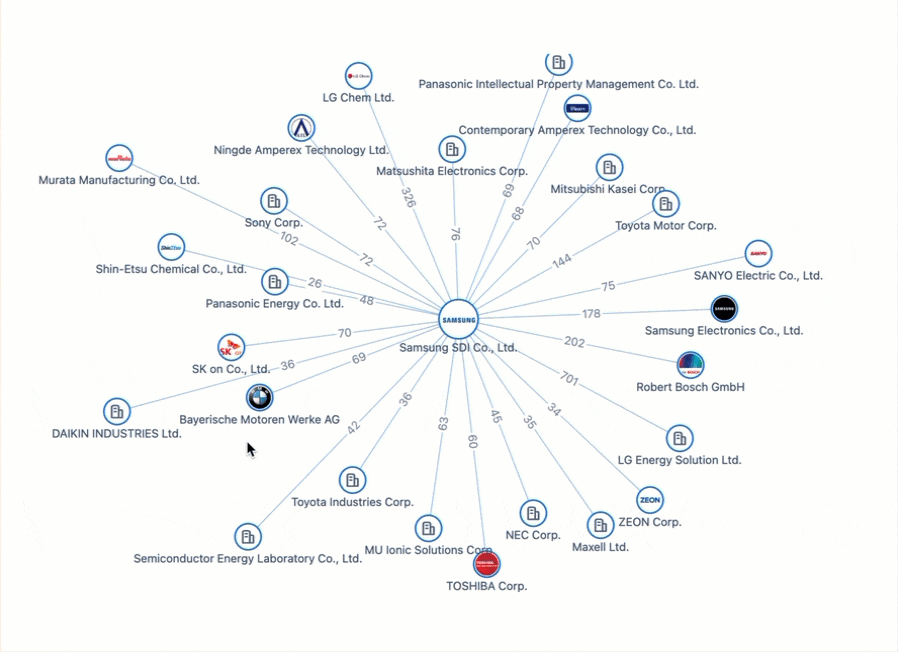Revolutionizing the Cosmetics Industry: 10 R&D Trends
The cosmetics industry is constantly evolving, with new trends and technologies emerging every year.
In this article, we’ll explore 10 R&D trends that are changing the cosmetics industry and driving innovation in beauty.
What are Cosmetics?
Cosmetics refer to a broad range of products that are used for enhancing or altering the appearance of the human body. They are designed to be applied to the skin, hair, nails, or lips, and serve various purposes such as enhancing beauty, improving hygiene, or providing a temporary transformation. Cosmetics have been an integral part of human culture for centuries, used by individuals to express their personal style, boost self-confidence, or simply indulge in self-care rituals.
Examples of cosmetics include:
- Makeup: This category includes products like foundation, concealer, blush, eyeshadow, mascara, lipstick, and more. Makeup is used to enhance facial features, create artistic looks, and provide a desired aesthetic.
- Skincare Products: Skincare cosmetics encompass a wide range of products such as cleansers, moisturizers, serums, toners, masks, and exfoliants. These products are aimed at improving the health, texture, and appearance of the skin.
- Haircare Products: Haircare cosmetics include shampoos, conditioners, hair masks, styling gels, serums, and hair sprays. These products help maintain the cleanliness, health, and styling of hair.
- Fragrances: Perfumes, colognes, and body sprays fall under this category. They are used to add pleasant scents to the body and enhance personal fragrance.
- Nail Products: Nail polish, nail art accessories, and nail care products are part of this category. They are used to beautify and maintain the appearance of nails.
- Personal Care Products: This encompasses a wide range of cosmetics such as deodorants, toothpaste, mouthwash, soaps, shower gels, and body lotions. These products are primarily focused on hygiene and maintaining cleanliness.
10 R&D trends that are changing the cosmetics industry
1.) Biodegradable and Sustainable Packaging
As consumers become more environmentally conscious, the demand for biodegradable and sustainable packaging is on the rise.
R&D teams are developing new materials, such as plant-based plastics and biodegradable paper, to meet this demand. These materials are not only better for the environment but also help to reduce waste and pollution.
2.) Microbiome-Friendly Products
Microbiome-friendly products are designed to support the skin’s natural microbiome, which is the collection of microorganisms that live on the skin.
R&D teams are developing new ingredients, such as probiotics and prebiotics, to create products that maintain a healthy skin microbiome. These products can help improve the skin’s overall health and reduce the risk of inflammation and other skin issues.

Between 2019 and 2021, investments from venture capitalists (VCs) in skin microbiome R&D saw a significant surge, increasing from under $7 million in 2018 to almost $52 million in 2021. However, in 2022, funding for this field experienced a decline once again, and as for 2023, it remains to be seen whether the trend will continue.
3.) Plant-Based Ingredients
Plant-based ingredients are becoming increasingly popular in cosmetics as consumers seek natural and sustainable alternatives to traditional ingredients.
R&D teams are exploring the potential of plant-based ingredients, such as botanical extracts and oils, for use in skincare and makeup products. These ingredients can provide a range of benefits, from moisturizing and soothing the skin to reducing inflammation and improving the appearance of fine lines and wrinkles.
4.) Anti-Pollution Products
Anti-pollution products are designed to protect the skin from environmental pollutants, such as air pollution and UV radiation. R&D teams are developing new ingredients, such as antioxidants and barrier protectors, to create products that shield the skin from these harmful factors.
These products can help to improve the overall health and appearance of the skin, while also reducing the risk of long-term damage.

Given the current state of the world and the effects of climate change, it comes as no surprise that environmental pollution ranks as the leading technical challenge that R&D professionals are striving to overcome in the development of anti-pollution cosmetics.
5.) Personalized Skincare
Personalized skincare is a trend that involves customizing skincare products to meet an individual’s unique needs. R&D teams are using technologies, such as artificial intelligence and machine learning, to analyze an individual’s skin and create personalized skincare regimens.
These products can help to improve the effectiveness of skincare treatments and ensure that each individual receives the care they need to maintain healthy skin.
6.) Natural and Organic Products
Natural and organic products are becoming increasingly popular as consumers seek products that are free of harmful chemicals and preservatives. R&D teams are developing new formulas using natural and organic ingredients, such as essential oils and botanicals. These products can help to reduce the risk of skin irritation and promote healthier, more radiant skin.
7.) CBD Products
CBD, or cannabidiol, is a compound derived from the cannabis plant that has been shown to have anti-inflammatory and antioxidant properties.
R&D teams are exploring the potential of CBD for use in skincare and makeup products. These products can help to reduce inflammation, promote healthy skin, and improve the overall appearance of the skin.
According to a recent report by Market Research Future (MRFR), the market for CBD skincare products is expected to grow at a compound annual growth rate (CAGR) of 5.5%, and will reach $8,039.4 million by 2030.
8.) Digital Beauty
Digital beauty involves the use of technology, such as augmented reality and virtual reality, to enhance the beauty shopping experience. R&D teams are developing new tools and apps that allow consumers to try on makeup virtually and customize their beauty routines.
These technologies can help to improve the overall shopping experience and make it easier for consumers to find the products that work best for them.
9.) Advanced Sun Protection
Sun protection is essential for maintaining healthy skin, and R&D teams are developing new technologies, such as UV sensors and DNA repair enzymes, to enhance the effectiveness of sun protection products.
These technologies can help to improve the accuracy of sun protection, ensuring that the skin is fully protected from the sun’s harmful rays. By providing more effective sun protection, these products can help to reduce the risk of sun damage and skin cancer.
10.) Microplastic-Free Products
Microplastics are tiny pieces of plastic that are harmful to the environment and can be found in many cosmetic products, such as scrubs and exfoliants.
R&D teams are developing new formulas that are free of microplastics to reduce their impact on the environment. These products can help to promote sustainability and reduce the amount of plastic waste in the environment.
Closing Thoughts
The cosmetics industry is undergoing a period of transformation, with R&D teams driving innovation and change. By exploring the top 10 groundbreaking R&D trends, we can see how the industry is evolving to meet the demands of consumers and promote sustainability, health, and beauty.
To learn more about the trends shaping the future of cosmetics, download our full 2023 trends report.
Your recommended content
-

Patsnap Surpasses US$100 Million in Annual Recurring Revenue
Category: Article | Category: News/PR
Wednesday, June 12, 2024
Patsnap has reached a significant milestone of achieving $100M in Annual Recurring Revenue (ARR), marking an impressive 20% year-over-year growth in 2023. This milestone highlights the massive and meaningful value our platform brings to over 12,000 IP and R&D teams across 50 countries, driving efficiency, productivity, and collaboration.
-

Introducing Hiro, an AI assistant built for IP and R&D workflows
Category: AI advancements | Category: AI development | Category: AI-tools | Category: Article | Category: artificial intelligence
Tuesday, May 14, 2024
Powered by Patsnap’s industry-specific LLM, Hiro is designed to streamline IP and R&D workflows from ideation to product launch. With its robust AI capabilities, Hiro brings a new level of efficiency, precision, and security to tasks that were once time-consuming and labor-intensive.What sets Hiro apart is that it draws from our large language model that’s been trained on market-leading patent records, academic papers, and proprietary innovation data. This ensures we deliver more accurate and reliable results for every prompt.
-

Powering the Future of Electric Vehicles: The Battle for Battery Innovation and Patents
Category: Article | Category: battery technology | Category: electric vehicle | Category: EV | Category: lithium ion | Category: lithium ion battery | Category: NEV | Category: new energy vehicles
Monday, April 22, 2024
In the ever-evolving landscape of innovation, the electric vehicle (EV) industry stands as a beacon of technological transformation. As we explore the patents propelling the EV revolution, Apple's venture serves as a poignant example of the challenges even industry giants face in this competitive arena. Join us on a journey through the global patent landscape, where the quest for superior power solutions unfolds, and where the true pioneers of the EV revolution are making their mark.